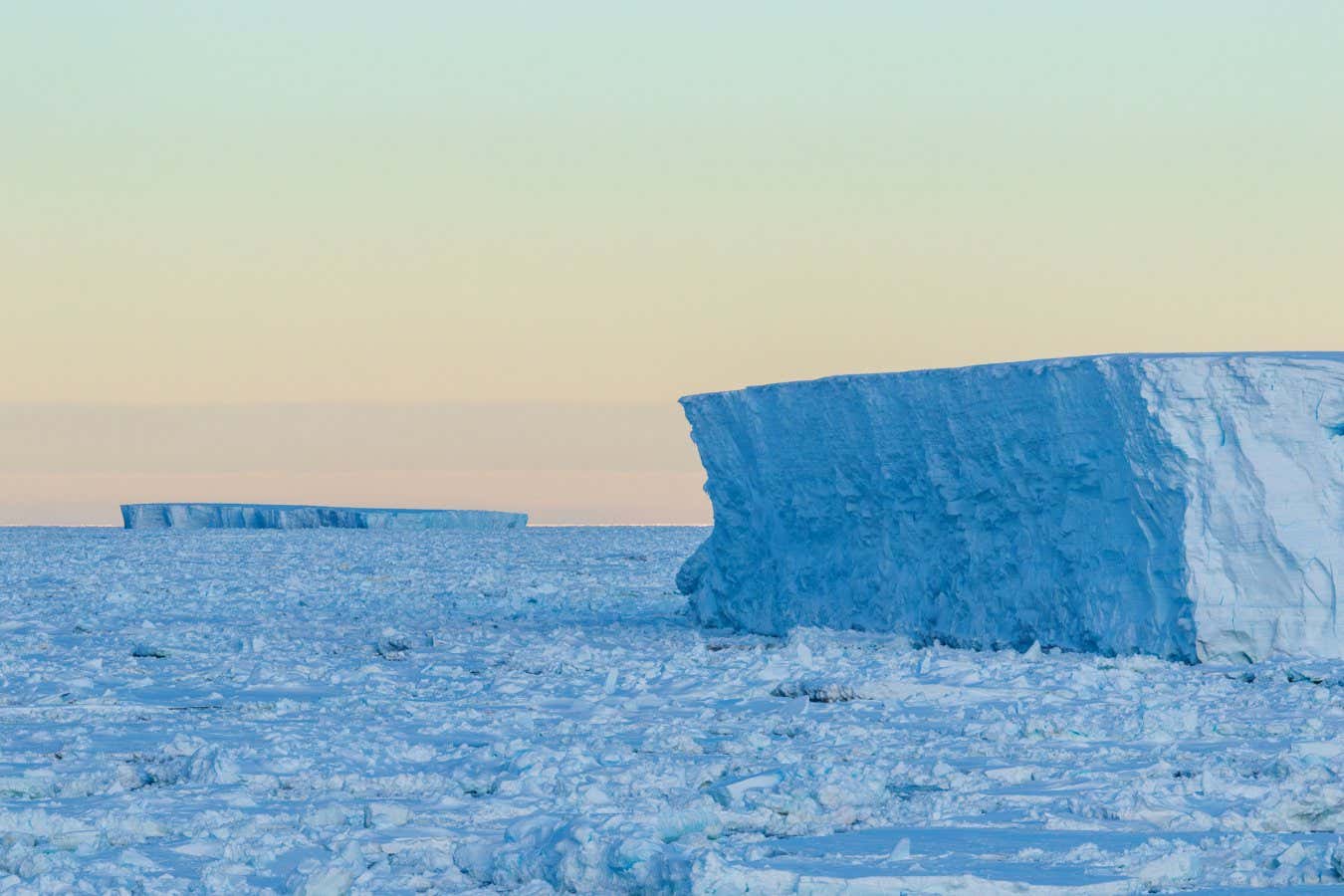Scientists have found scour marks on the seabed made by giant icebergs about 18,000 years ago, and they could offer clues to the fate of Antarctica’s ice
By Jonathan Amos
24 April 2025
Tabular icebergs are breaking away from the ice shelves of Antarctica
James Kirkham
City-sized icebergs once drifted past the coast of Britain when ice sheets covering much of northern Europe were in rapid retreat about 18,000 to 20,000 years ago.
James Kirkham at the British Antarctic Survey and his colleagues have found the preserved scour marks these giants made as their undersides ploughed through seafloor sediments. The long, comb-like features are buried under mud in the North Sea but are still visible in the seismic survey data collected to search for oil and gas.
Read more
Geoengineering could save the ice sheets – but only if we start soon
Advertisement
“We can estimate from the extent of the scours and what is known about ancient sea levels that these bergs were probably five to a few tens of kilometres wide and perhaps a couple of hundred metres thick – icebergs on the scale of a mid-sized British city,” says Kirkham.
In Antarctica, tabular or table-top icebergs are a spectacular sight. Some, like the recent behemoths known as A23a and A68a, would rival even small US states in terms of area. They calve from ice shelves – the wide, floating protrusions of glaciers that flow off the land into the ocean.
The recognition that tabular icebergs once existed in the North Sea is therefore a clear indication that the seaward margins of a British and Irish ice sheet also had ice shelves. And it means there could be some lessons for future Antarctic decline, says Kirkham.
